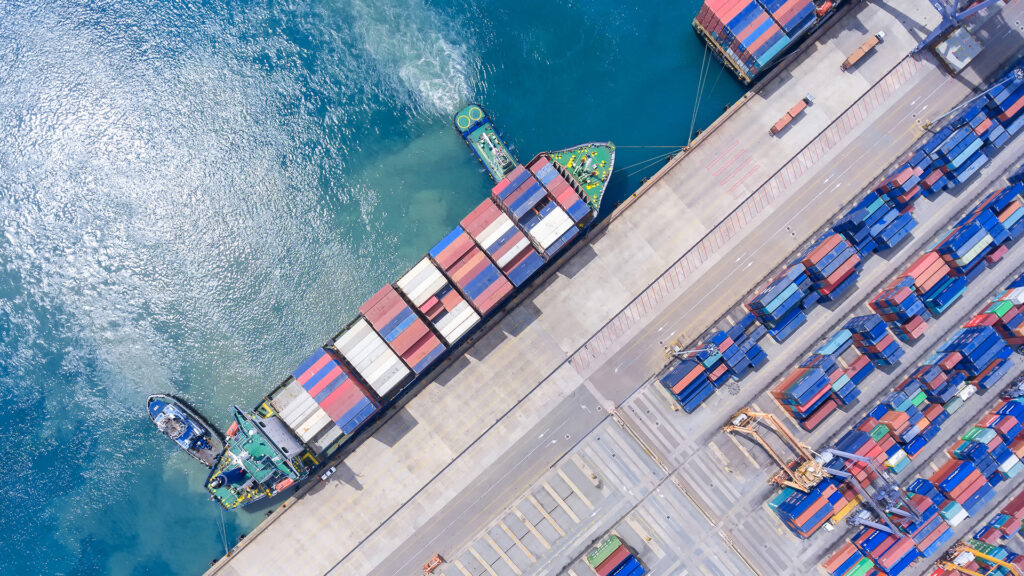
Brave new world? Changing risk profiles in trade and trade finance
The risk profile of commodities trading and trade finance has long been familiar. This is because there are inherent risks involved in trading with counterparties across distances and jurisdictions, with misdelivery and non-payment being two of the most obvious.
The sums of money involved, the rapid nature of the business and the fact that goods are more often than not represented by nothing more than pieces of paper also make commodities trading and trade finance prime targets for fraudsters. Over the years, a body of case law has built up to identify where risk lies when such problems inevitably occur.
However in recent times, the long familiar legal and operational landscapes have been changing and with them, the risk profile of trade and trade finance. The purpose of this paper is to explore some of the key themes and issues we are observing in more detail, looking at claims under bills of lading and letters of credit as just two examples of how things are changing from a legal perspective and looking at the move towards digitalisation from an operational perspective.
Evolving legal risk – are bills of lading still good security for financiers?
The established position
Notwithstanding the risks involved, delivery of cargoes against letters of indemnity (LOIs) rather than original bills of lading (BLs) is commonplace in trading and is particularly prevalent in certain commodities, such as oil. Traditionally it has been very difficult for shipowners to defend a misdelivery claim brought by the holder of an original BL. This is for good reason: the owners’ obligation to deliver cargo only against original BLs is well established and provides certainty to all parties involved in the trade. If owners agree to discharge against LOIs rather than original BLs, they do so fully cognisant that they may in due course face a claim for misdelivery – which is the precise reason owners will only agree to discharge on this basis against LOIs.
Notwithstanding this, there have been many attempts by owners to defend misdelivery claims, whether on the grounds that it was not intended that a trade finance bank, even as transferee of the BL, would acquire rights of suit against the carrier, that the bank did not acquire the BLs in good faith or that the BLs are “spent”, the goods having been delivered by the time that the bank acquires the BLs. Historically, faced with such arguments, the courts have found that a BL and the rights of suit thereunder can be effectively endorsed to a bank even after the goods have been delivered (against an LOI) and that, whilst delivery of cargo to the lawful holder of the original BL will result in the BL becoming spent, delivery of the cargo under an LOI to a party other than the lawful BL holder does not result in the BL becoming spent.
Trade finance banks have therefore previously enjoyed the comfort of being able to claim against carriers even in circumstances where they acquired original BLs after (sometimes long after) the goods have been discharged and even where the bank knew that there was a possibility that the goods may have been discharged before it acquired the BLs.
What’s changed?
Several recent cases in Singapore and England suggest that the courts may now be more willing to examine the specific circumstances surrounding the financing of the relevant trade and discharge of cargo. This ultimately manifests itself as a question of good faith and/or a question of causation (i.e. did the carrier’s delivery of the cargo cause the bank’s loss, or was the loss caused by other factors (e.g. the insolvency of its customer)?).
The causation question has come before the Singapore and English courts on several occasions over the last few years, often against the backdrop of significant trader insolvencies (and in some cases frauds) which left trade financiers looking for recourse other than against their (now insolvent) customers. The trend in the case law is clear: the courts are more willing to delve into the underlying facts and transactions to determine whether it is appropriate to allow recourse against owners.
Singapore
The trend started in Singapore, with the High Court issuing 2 judgments in relatively quick succession denying summary judgment in misdelivery claims brought against owners by trade finance banks as lawful BL holders.
In the STI Orchard [2022] SGHCR 6, the High Court found that owners had raised a triable issue as to whether the bank had become a holder of the BLs in good faith. Owners relied on a number of characteristics of the bank’s financing arrangements to argue that the bank was not relying on the BLs as security when it provided financing to its customer (Hin Leong). For instance, (i) the bank did not ensure that BLs were made out to its order or blank endorsed, in spite of the bank’s letter of credit application form which provided, by default, that bills of lading were to be made out to the order of the bank or blank endorsed; and (ii) it knew or had notice that Hin Leong intended to blend the cargo (which would have necessitated new BLs for the blended product) and the bank only tried to have the BLs endorsed to it after it discovered Hin Leong’s financial difficulties. In those circumstances, it was arguable that the bank had not become a holder of the BLs in good faith.
This was followed by Standard Chartered Bank (Singapore) Ltd v Maersk Tankers Singapore Pte Ltd [2022] SGHC 242, in which the High Court again refused the trade finance bank’s application for summary judgment in respect of a misdelivery claim. Again, the High Court examined the terms of, and circumstances surrounding, the bank’s financing to its customer (again, Hin Leong) and concluded that it was arguable that the bank did not rely on the BLs as security. The factors noted by the court included, amongst others, the facts that the bank knew at the time the relevant letter of credit (LC) was issued that the underlying cargo had been delivered and that in the bank’s financing documents, the relevant facility was described as “unsecured” and included provision for alternative payment documents if the BLs would not be received by the bank (arguably indicating that the bank did not always require BLs).
England & Wales
Similarly, the English Court of Appeal recently upheld a first instance decision that a carrier’s decision to deliver a cargo of oil against an LOI rather than original BLs was not causative of the bank’s loss (Unicredit Bank AG v Euronav NV [2023] EWCA Civ 471). In this instance, the court examined the question of what would have happened to the bank’s security interest had owners refused to discharge without production of the BL. The finding at first instance was that in that scenario, the bank would have permitted discharge without production of the BL. It followed that the bank would have incurred the loss in any event and owners’ delivery against an LOI was not causative of the loss.
What are the implications?
One of the arguments raised by the bank in the Unicredit Bank AG v Euronav NV case was that the conclusion on causation would have “calamitous consequences for those involved in providing commodity trade financing” as it opened the door for owners to assert a causation defence in every misdelivery case. The Court of Appeal was unconcerned by this argument, stating that it was “simply the result of the application of conventional principles”. However, the Court of Appeal queried whether the decision would have such far reaching consequences, emphasising that the case ultimately turned on findings of fact that the bank believed it was secured in other ways and/or that owners would have been able to seek instructions to discharge from the holder (and that the holder would have given such instructions).
Nonetheless, we can certainly expect that going forward, owners will (rightly or wrongly) attempt to defend a higher proportion of misdelivery claims which they may have previously paid or settled voluntarily. Whilst this may be the result of applying conventional principles, on any view, the prospect that owners will likely be more willing to put up a robust defence to what may have previously been a straightforward misdelivery claim necessarily dilutes the value of BLs in the hands of financiers.
From an operational perspective, one possible consequence is that a prudent owner may try to establish who is, at the time of discharge, the then current (or the prospective ultimate) lawful BL holder and seek their instructions to discharge. A prudent bank, against the backdrop of these decisions, may refuse to do so, knowing that giving such instructions may result in the loss of a claim against owners in due course. This raises the prospect of significant delay or even a stalemate, which discharge against LOIs has historically sought to avoid. Arguably, this is again down to, per the Court of Appeal, “simply the result of the application of conventional principles”. After all, the law in this area seems to be reflecting the fact that an original BL should perform its function as the “key to the warehouse” and that insofar as banks are not actually relying on the BLs to access goods, but rather to make monetary claims long after the goods have left the warehouse, they may face difficulties. However, such a trend may have practical implications which are yet to be fully realised. For banks in particular, it will mean rethinking whether BLs really are valuable security or whether they need to ensure that they are secured in other ways.
Evolving legal risk – letters of credit: lifeblood or blood clot?
The established position
The role of LCs in international trade cannot be overstated. They are often described as the lifeblood of international commerce. As Lord Diplock stated in United City Merchant (Investments) Ltd v Royal Bank of Canada [1983] 1 AC 168, a LC is designed to “give the seller an assured right to be paid before he parts with control of the goods”.
LCs allow sellers to sell to buyers or jurisdictions with which they may not otherwise be comfortable. Conversely, they allow buyers to access sellers and markets which may otherwise be unavailable to them. The security LCs offer is based on the fact that they are autonomous contracts which oblige the issuing or confirming bank to pay except in very limited circumstances. If those limited circumstances become too wide, LCs will cease to be effective because they will no longer offer the “assured right to be paid” which gives a seller confidence to part with control of their goods.
As a matter of English law, the only recognised exception to the bank’s obligation to pay is where the seller “fraudulently presents to the confirming bank documents that contain, expressly or by implication, material representations of fact that to his knowledge are untrue” (United City), often referred to as “the Fraud Exception”.
What’s changed?
The extent of beneficiary knowledge required to invoke the Fraud Exception has long been a matter of debate but in a recent Singapore High Court decision (Winson Oil Trading Pte Ltd v Oversea-Chinese Banking Corp Ltd [2023] SGHC 220), it was held that the Fraud Exception is satisfied “if in presenting documents for payment, a beneficiary makes a false representation of material fact knowingly, or without belief in its truth (which includes the beneficiary being reckless, in the sense of being indifferent to the truth)”. Therefore, according to the Singapore courts, knowledge would not encompass just the beneficiary’s actual knowledge that the statement it is making is false, but also indifference as to whether the statement is correct.
The case turned on various representations which Winson had made under LOIs which were presented for payment under LCs in circumstances where original BLs were not available (which is a very common practice and is different to the practice of issuing LOIs for delivery of cargo discussed above). The LOIs made various statements relating to the existence and validity of the BLs and the delivery of the underlying cargo. These statements were found to be false on the basis that no cargo was shipped pursuant to valid BLs as described in the LOIs. The question that therefore fell to be determined was whether Winson knew that these statements were false.
The Singapore High Court found that the Fraud Exception was established: by the time it presented documents (which was in fact a second attempt at presentation) “Winson did not believe in the truth of the representations in its LOIs – at the very least, it was indifferent to whether its representations were true or not, in which case it did not believe in their truth”. In this regard, the High Court relied on findings, amongst other things, first that Winson had been alerted to an assertion that goods had not been loaded pursuant to the BLs but rather than investigating further, it presented documents (including the LOIs) for payment and second, that Winson had raised questions with other parties involved as to whether it was receiving clean title to the goods.
What are the implications?
As with the cases on misdelivery, it is clear that the courts are now more willing than before to look into the details of underlying transactions to determine whether payment under a LC can be resisted. This exception to a bank’s obligation to pay under a LC cannot be allowed to grow too wide in scope. The utility of LCs in international trade is their reliability as a source of prompt payment. Such reliability can only be achieved where the grounds for non-payment remain very narrow in scope. This is underscored by the fact that the UCP600 rules allow a bank only a very short window (five banking days) within which to either decline or accept a presentation.
The situation to be avoided is that of banks rejecting payments in an attempt to buy time to unearth facts on which they might try to mount a defence to payment. This may of course not become a widespread issue. Many banks recognise that non-payment (particularly frivolous non-payment) is a reputational issue as much as a legal one. However, we have seen examples over the last few years of banks which are unlikely to be reimbursed by a (now insolvent) LC applicant citing fraud as a ground for non-payment in circumstances where they have no evidence that the beneficiary was in any way involved in or had knowledge of any fraud. What follows is potentially costly and time-consuming litigation in circumstances where the LC ought to have provided reliable and timely payment. A trend towards a detailed examination of the underlying facts, if taken too far, may have the unfortunate side effect of encouraging such behaviour from issuing and confirming banks.
Operational innovations – industry developments and changing risk profile
The industry has reacted quickly and decisively to counter many of the frauds and poor behaviours which have come to light over the last few years. However, as industry practices evolve, so too do the practices of the fraudsters. Exciting new technologies bring with them the prospect of wrongdoers who are willing to exploit a relative lack of experience and sophistication in the new ways of doing business. One need look no further than the crypto space (which, from a purely technological perspective, is incredibly sturdy and resilient to fraud) to see examples of how some exploit new industries and technologies to defraud others.
Digitalisation
There is a move towards the use of digital platforms both for the conclusion of contracts and for their performance. A number of these are based on blockchain technology which enables users to rely on a single source of truth. To take a simple example, this can enable users to know at any given time who within a sale contract or banking chain is the then current holder of a bill of lading.
Whilst digitalisation is certainly one solution, it does not in and of itself provide a full answer to all risk. Reliance on technology necessarily introduces other risks such as system failures and cyber attacks. In this regard, we have seen a notable increase in phishing scams whereby a fraudster interposes itself in an email exchange between parties and directs that payments under a contract be made to an alternative account (which belongs to the fraudster). This happens very quickly and by the time anyone is alerted to the problem, the funds are often long gone.
This has (for no obvious reason) become particularly prevalent in the soft commodities space, to the extent that the sector is responding to address the risk: we have seen a number of traders introducing clauses in their standard form contracts specifically requiring parties which receive a request to make payment to a new account to independently verify the new account details with their usual contact at the counterparty entity. Whilst this ought to form part of standard practice already, such clauses seek to make clear that if a party makes payment to an unverified account without conducting proper checks, it does so at its own risk.
This is not in any way to suggest that digitalisation should not be welcomed with open arms. Aside from the benefits of efficiency, increased certainty and the obvious reduction in paper-based risk, there are environmental benefits to moving away from hard copy documents and towards digital equivalents.
Legal innovation
The law is shifting in response to increased digitalisation. Of particular recent note is English law’s Electronic Trade Documents Act 2023 which among other things, gives electronic BLs the same functionality and validity as paper BLs under English law. It is not the purpose of this paper to look in detail at the Act (on which we have published previously- see here and here). Suffice to say that, along with Singapore’s Electronic Transactions (Amendment) Act of 2021, it is an extremely welcome development.
Changing risk profiles: LOIs – out with the old risk, in with new?
It is hoped that the widespread adoption of electronic BLs (whilst still some way away) will eradicate, or at least significantly reduce, the need for LOIs and the risks associated with their use. This is logical given that particularly for short voyages, it is often not physically possible for hard copy BLs to make their way through the trading and banking chain to the receiver in time for the receiver to present them in exchange for delivery of the cargo. This is one scenario in which the use of LOIs is traditionally widespread; the alternative being for the receiver to wait days or even weeks for the original BLs to make their way to the discharge port, resulting in increased costs and delay for all parties involved.
However, even total adoption of electronic BLs (which is some way off) will not eradicate the need for LOIs entirely. It is not always the case that LOIs are used because the original hard copy BLs have not physically made their way to the receiver. It could equally be the case that the BLs have not made their way through the chain because an unpaid intermediary is holding them as security.
Digitalisation could change the traditional risk profile for owners faced with a request to discharge against an LOI. Previously, owners may have assumed that the original hard copy BLs were simply being couriered between parties and would eventually end up with the receiver and so be quite content to agree to discharge against LOIs. However, where the BLs have been issued electronically, owners may suspect (or they may even know by looking at the electronic BL platform) that the BLs are held by a bank or other unpaid intermediary. In such circumstances, owners may be more reluctant to accept LOIs because they will know that there is a very real possibility they will face a misdelivery claim insofar as that intermediary remains unpaid. This could result in additional delay or even a stalemate as owners may take time to seek instructions from the BL holder and, following recent authority, an unpaid bank holding BLs as security may be reluctant to consent to discharge against LOIs, fearing that providing such consent may render that security worthless.
It remains to be seen how such a situation will resolve but it is an example of how the evolution of the law and operational practices, whilst plugging certain gaps, can give rise to others.
Checking and monitoring
There have been a number of other significant operational innovations over the past few years which will increase operational efficiencies. The Association of Banks in Singapore has developed the Trade Finance Registry which allows banks to perform anonymised checks of trade documents to determine whether they have been financed previously. This goes a long way to addressing the risk of double financing, although other risks (such as verifying whether the cargo exists in the first place) remain.
On this note and in a slightly different (but no less important) context, some companies are offering solutions which will enable traders and financiers to remotely monitor goods and cargoes in which they have an interest. Relatively simple, but often overlooked, checks of this nature are of paramount importance and many of the fraud cases that we have seen over the past few years could have been avoided, or at least addressed at a much earlier stage, if traders and financiers had conducted regular physical inspections (or in some cases, any inspection at all!) of the goods which they were trading or financing.
Conclusion
Legal and operational risk are two aspects of the overall risk profile to be considered in a trade or financing. However, they are intrinsically linked: operational and legal developments must keep up with and respond to each other. Indeed in some cases, a change in law may justify a change in operational practices, rather than the other way round.
With every innovation comes a new risk profile. It is the job of all of us engaged in the commodities trading industry always to try to stay one step ahead.
Holman Fenwick Willian Singapore LLP is licensed to operate as a foreign law practice in Singapore. Where advice on Singapore law is required, we will refer the matter to and work with licensed Singapore law practices where necessary.

Download a PDF version of ‘Brave new world? Changing risk profiles in trade and trade finance’












